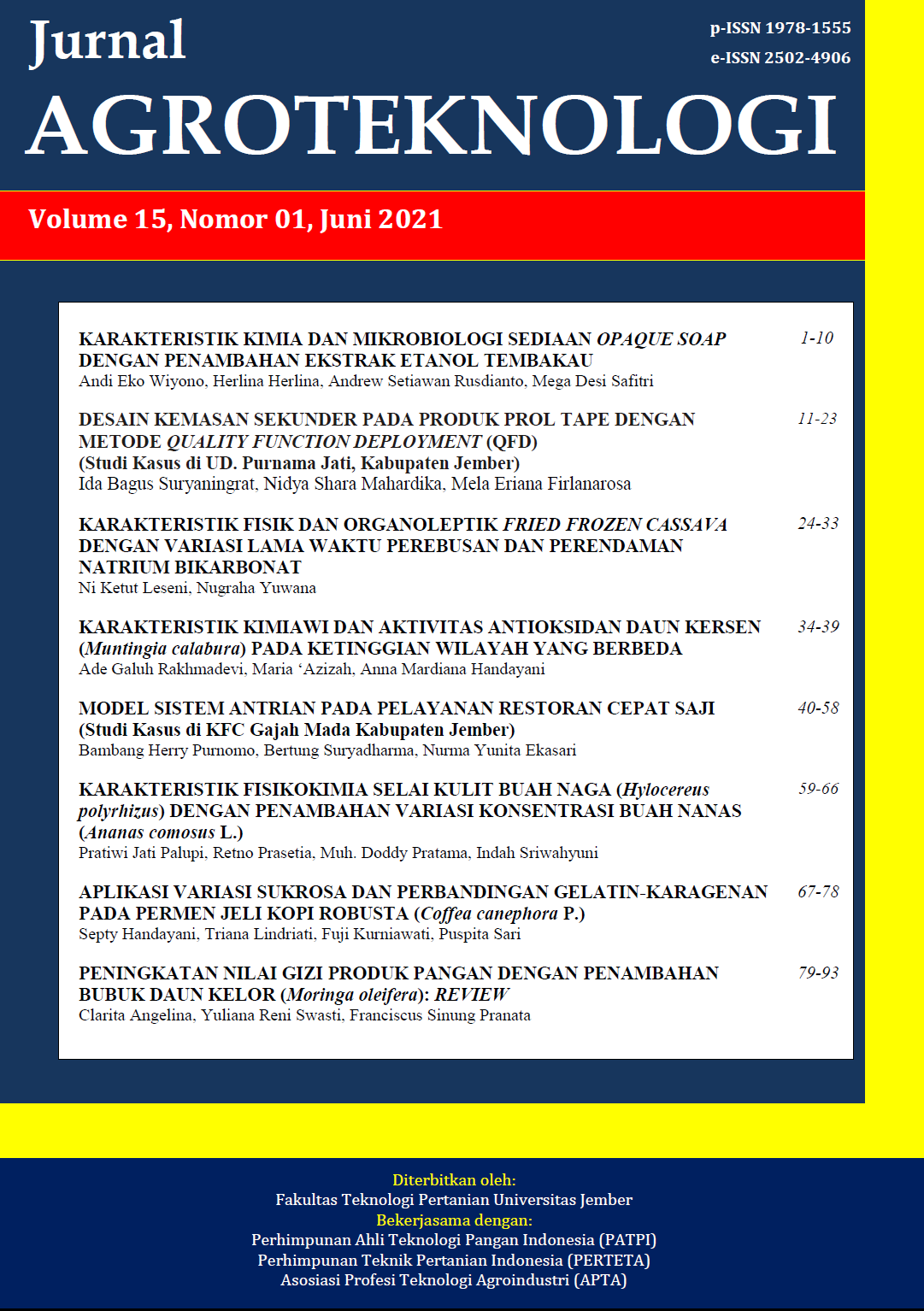KARAKTERISTIK FISIKOKIMIA SELAI KULIT BUAH NAGA (Hylocereus polyrhizus) DENGAN PENAMBAHAN VARIASI KONSENTRASI BUAH NANAS (Ananas comosus L.)
DOI:
https://doi.org/10.19184/j-agt.v15i01.20644Abstract
Dragon fruit peels (Hylocereus polyrhizus) are generally only considered trash by the public because they are considered useless, even though dragon fruit peels still contain useful nutrients. Dragon fruit skin can be used as food, one of which is a jam. The addition of pineapple fruit variations to dragon fruit peel jam as a flavor enhancer and natural fragrance to reduce the use of sugar in jam and the aroma of pineapple fruit can mask the distinctive aroma of dragon fruit which is less desirable. The purpose of this study was to determine the appropriate concentration variations in the manufacture of dragon fruit peel jam with the addition of pineapple, which consumers liked. This study used a completely randomized design with six (6) treatments and two (2) replications. Dragon fruit peel jams analyzed by chemical tests included moisture content, sugar level, and pH, while organoleptic test included color, texture, taste, aroma, and a total of 30 untrained panelists. Observation data were processed using ANOVA (α = 5%) and further tested using the honest significant difference test (BNJ) (α = 5%). The results showed that the pineapple’s addition to dragon fruit peel jam had a very significant effect on the panelists' preference for aroma and taste, but not significantly different from the color, texture, and chemical characteristics of jam. The N6 treatment (dragon fruit peel 250 g: pineapple fruit 250 g) was the best jam, based on chemical characteristics (pH content of 3.52, moisture content of 18.65%, sugar level of 53.30%) and preferable in organoleptic characteristics (2.97 of color, 2.97 of texture, 2.97 of flavor, 3.00 of taste).
Keywords: agricultural waste, dragon fruit peel, jam, pineapple
Downloads
Downloads
Published
Issue
Section
License
Jurnal Agroteknologi has CC-BY-SA or an equivalent license as the optimal license for the publication, distribution, use, and reuse of scholarly work. Authors who publish with this journal retain copyright and grant the journal the right of first publication with the work simultaneously licensed under a Creative Commons Attribution-ShareAlike 4.0 International License that allows others to share the work with an acknowledgment of the work's authorship and initial publication in this journal.
 JURNAL AGROTEKNOLOGI
JURNAL AGROTEKNOLOGI 








.png)
